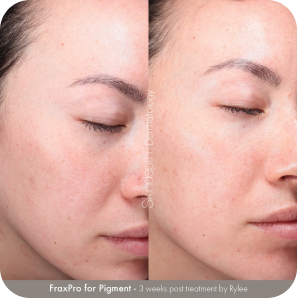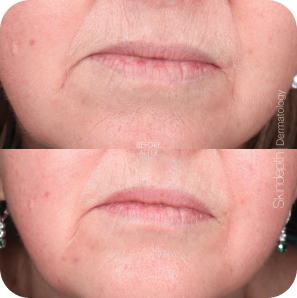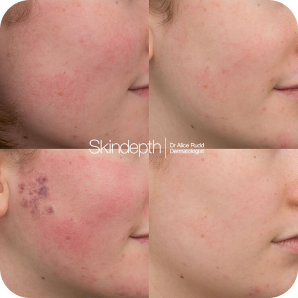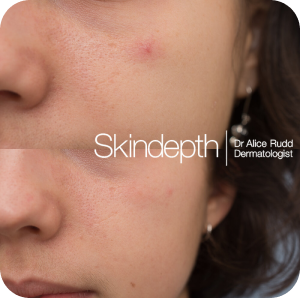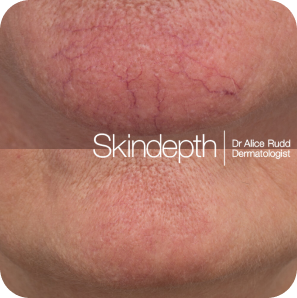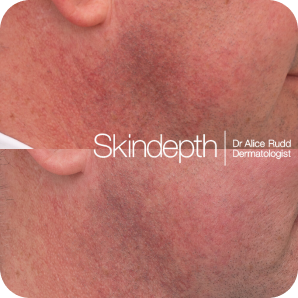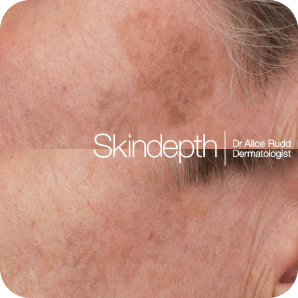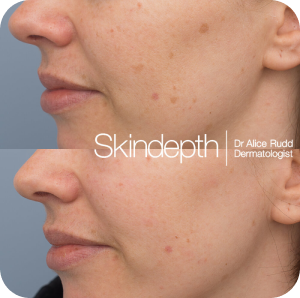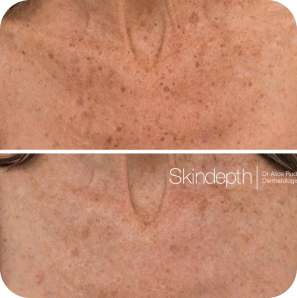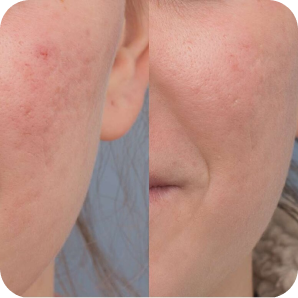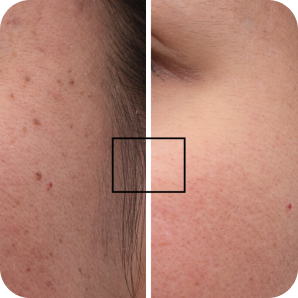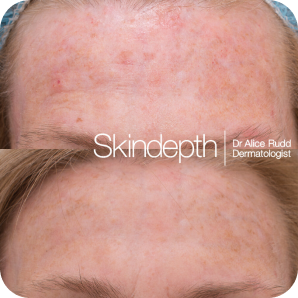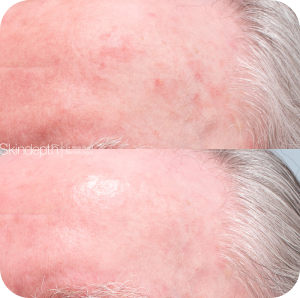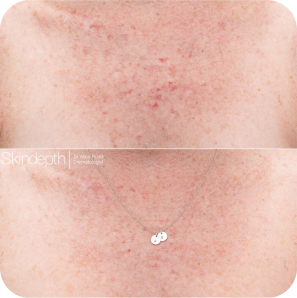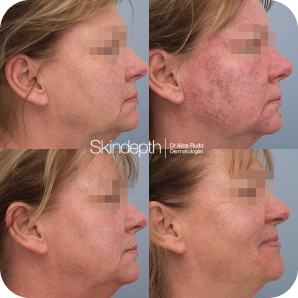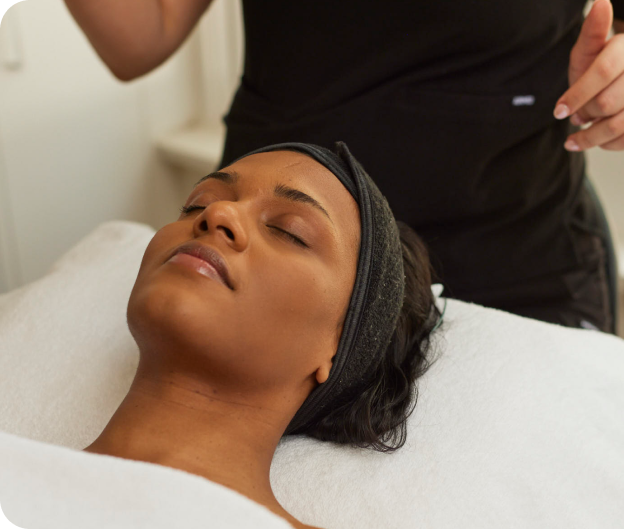COSMETIC TREATMENTS
Medical Grade Laser
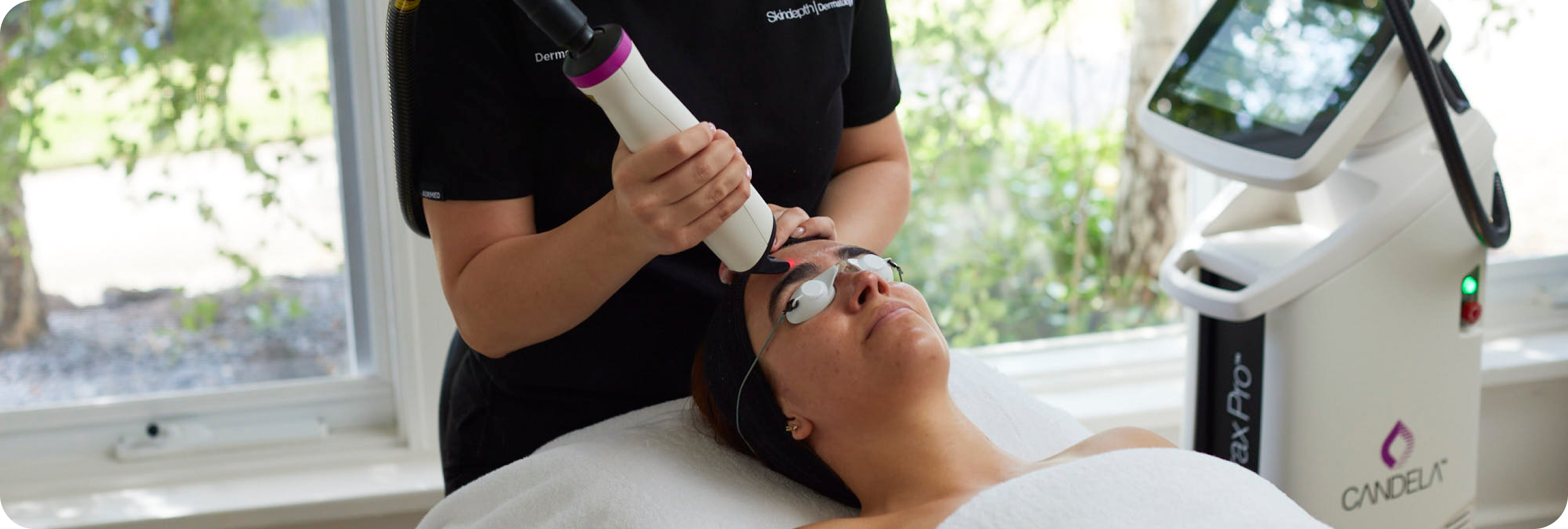
Non-ablative fractionated resurfacing laser
1550 Setting: The FraxPro 1550 is a diode laser with a hard hitting deep dermal impact, leaving the stratum corneum intact. By administering a controlled wound healing, the 1550 can deeply rejuvenate the dermis, with no damage to the epidermis. Performed under local anaesthetic this treatment is selected for the improvement of deep wrinkles, acne scarring and an overall impressive skin rejevunation.
The 1940 setting: The 1940 wavelength targets the epidermis and results in a superficial skin resurfacing that requires no numbing. This gives balanced even skin tone and refines the skin texture. Our choice for those desiring a skin texture improvement a visible reduction in pigmentation, sun spots, photodamage, fine lines and a more even complexion.
The 1550 and 1940 can be performed separately or combined and can treat face, neck, decollatage and hands.
-
Is the treatment painful?
Yes the 1550 laser is uncomfortable, hence we apply a topical anaesthetic numbing agent 1 hour prior to the procedure which makes it very tolerable. The 1940 is very tolerable and requires no anaesthetic prior.
-
How long is the treatment?
Depending on the body part being treated, treatment times can range from 15 mins for single scar areas, up to 1 hour for face, neck, hands and decollatage treatment. Multiple treatments may be required depending on the indication treated.
-
What is the expected downtime with treatment?
The skin will be red and swollen immediately after the treatment. This will settle a lot over the first few hours. The skin will feel warm and like a mild sunburn. The swelling and redness may last for up to 24-48 hours. After this time the skin will feel rough, like a gentle sandpaper which can last for up to 1-2 weeks. Some of the treated pigmented areas may appear darker momentarily.
This ablative laser treatment can be used to treat deep set wrinkles, many different types of scaring, as well as improving texture and tone. As this is an ablative treatment there may be significant downtime depending on the concern being treated and settings used. Pricing varies depending on the size of the area and concern being treated. A consultation with on of our clinical nurses must completed to assess suitability & provide all necessary pre/post information before booking this treatment.
-
Is the AcuPulse co2 laser painful?
Certainly if performed without appropriate anaesthetic and analgesia, the co2 laser can be uncomfortable. At Skindepth we use a combination of topical and injectable local anaesthetic to make the treatment with acupulse c02 tolerable. Patients are asked to attend the clinic at least 45 mins prior to facilitate the numbing.
-
How long is the AcuPulse c02 treatment?
Depending in the size of the area being treated and the condition, treatments can last from 30mins to 90mins. Scar and single lesions can be treated in around 30 mins, but full face acne scarring and rejuvenation can take up to 90 mins. If the c02 laser is being combined with other energy based devices then the treatment can lengthen.
-
What is the expected downtime after treatment?
Depending on the condition treated the downtime with the acupulse c02 can vary. For small lesions such as scars and syringomas, the full ablative C02 laser downtime can be as little as one week. For larger treatment areas such as acne scarring or skin rejuvenation, if a fully ablative setting is used on the c02 laser, there can be up to 2 weeks downtime. When using the fractionated setting (not full ablative) the downtime can be reduced.
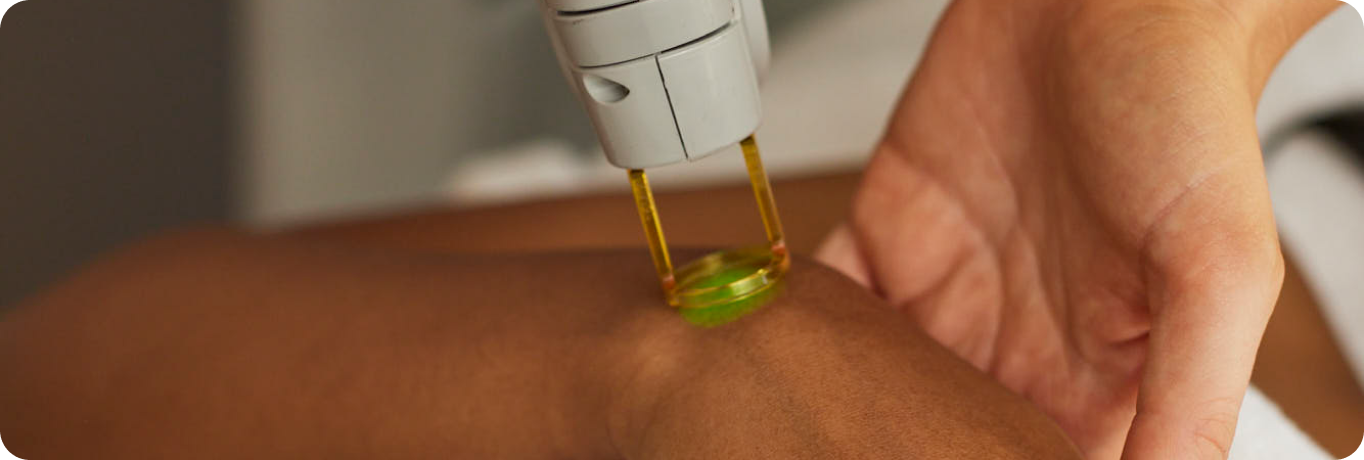
Vascular laser (Vbeam) is used as an effective tool to treats redness and inflammation. Skindepth’s Vbeam laser is considered the gold-standard of treatment for all vascular skin conditions.
Vbeam pulsed-dye laser works by producing an intense but gentle burst of light that is attracted to oxyhemoglobin (red chromophore within vessels) and degenerates the capillary walls. Although the blood vessels are destroyed the surrounding tissue is not damaged. The natural immune response to this process means the cells are removed from the body over a 6-week period. This treatment is suitable for people concerned with active acne, acne scars, broken capillaries, spider veins, rosacea, scars, stretch marks, vascular lesions and warts.
-
Is the Vbeam painful?
The sensation is described as being like an elastic band flicking your skin with some heat. Some areas on the face are more sensitive than others such as the upper cheeks and nose. A cool cryogen spray is emitted throughout the treatment when pulsing the skin to help cool it down. This reduces excess heat and redness within the skin. The skin can feel like it is sunburnt post-procedure.
-
How long is the treatment?
Typically appointments range between 30-45 mins.
-
What is the expected downtime with treatment?
All skin types are different therefore downtimes can vary. Swelling and redness can last anywhere between 3-5 days post treatment. If the skin bruises then this can last anywhere between 5-7 days, rarely up to 14 days. Ice packs can be used to reduce redness and inflammation.
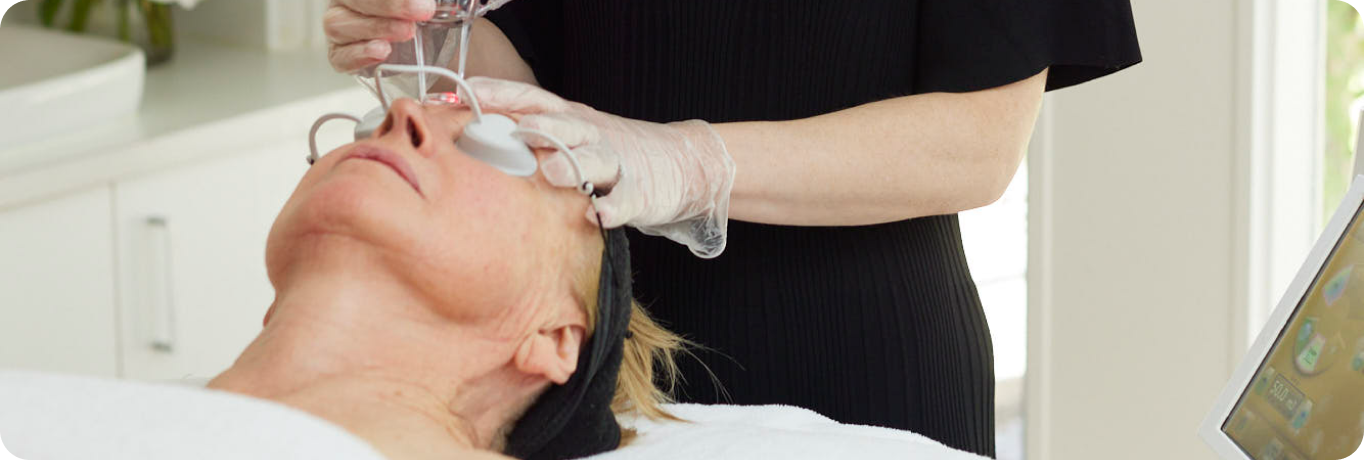
Pigmentation and discolouration is a common condition we see at Skindepth. One of the most effective treatment methods in the fight against pigment is Skindepth’s medical-grade pigment laser.
The Pastelle Q-Switched Nd:YAG Laser uses photoacoustic energy to target pigmented lesions within the epidermal or dermal layer of the skin. As the pigment absorbs the light, the laser heats up and shatters the pigment, drawing it to the surface without damaging the surrounding tissue. The natural immune response to this treatment removes these cells from the body within a 4-6 week period.
This treatment is suitable for people suffering from melasma, pigmentation, non-cancerous growths, uneven skin tone, enlarged pores and age spots. A dermatologist review is required before treating all pigmented lesions.
-
Is pigment laser painful?
The sensation is described as being like an elastic band flicking the skin accompanied by warmth. Some areas on the face are more sensitive than others such as the upper cheeks and nose. The skin can feel mildly sunburnt after the procedure but your Dermal Clinician will provide cooling options, such as an ice pack, to help alleviate any discomfort during and after the treatment.
-
How long is the treatment?
The treatment length depends on how large the area is being treated. Typically, appointments range between 15 - 45 minutes.
-
What is the expected downtime with treatment?
All skin types are different therefore downtimes can vary. Swelling and redness can last anywhere between 3-5 days post treatment. Temporary darkening of the skin can occur for up to 7-14 days. Micro-crusting can occur on the face between days 3-7 or on the body between days 3-14 post treatment. If the skin bruises then this can last anywhere between 5-7 days.
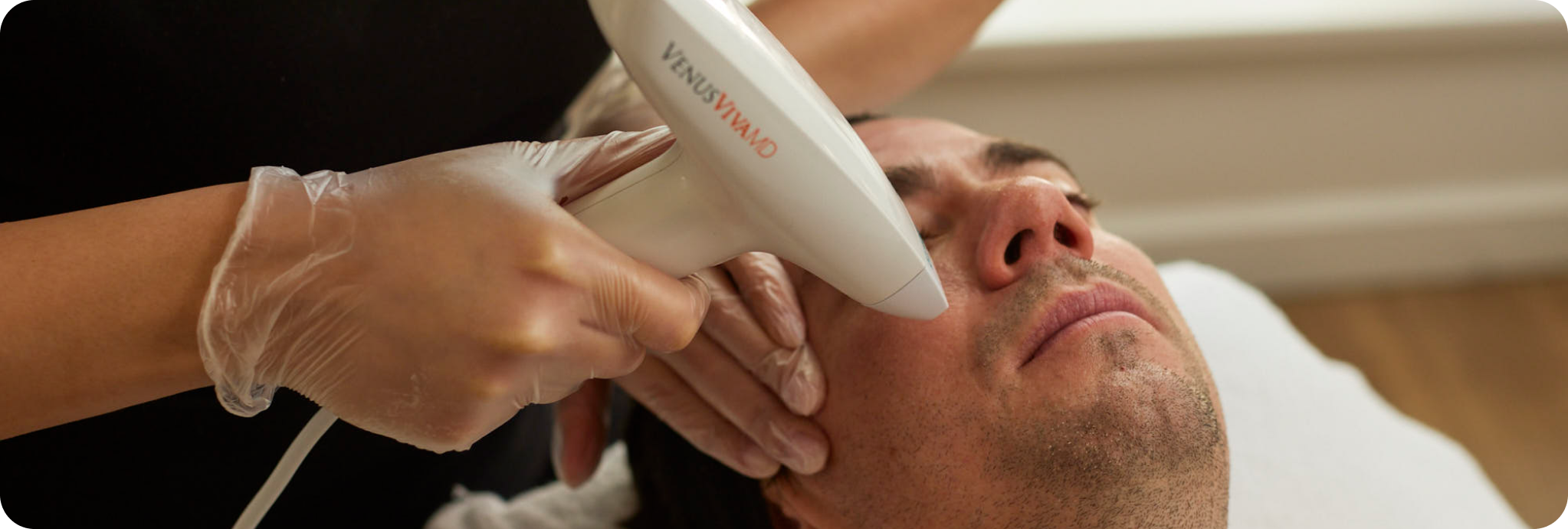
Venus Viva is an advanced NanoFractional Radio Frequency technology that creates ablation, coagulation and resurfacing of the skin for non-invasive rejuvenation, resolving minor to severe skin damage. Small needle-shaped pins penetrate through the top layer of the skin to trigger the skins own natural healing process. Venus Viva is a highly effective treatment option that delivers noticeable results.
This treatment is suitable for people concerned with scarring on both the face and body including acne scarring and stretch marks, fine lines and wrinkles, pigmentation, sagging skin, uneven skin tone as well as large/open pores. Not suitable for those with photosensitive disorders, infections, pregnancy, have active cold sores or have recently had injectables.
-
Is NanoFractional Laser painful?
Some patients feel no discomfort, whereas some others report the sensation of pin pricks. Topical anesthetic is administered 45 minutes prior and a cooling zimmer fan is used to assist with any discomfort during the treatment.
-
How long is the treatment?
The treatment takes 45 mins. However we ask you to please arrive 45 mins before your appointment so we can administer a topical anesthetic prior to treatment.
-
What is the expected downtime with treatment?
The down time post treatment is dependent on the individual. Please expect about 7 days of swelling and redness. Textural improvements in the skin can be seen after 7-10 days, however small bumps and flaking can appear temporarily between days 3-5. Results continue to improve months after the treatment as collagen takes time to regenerate.
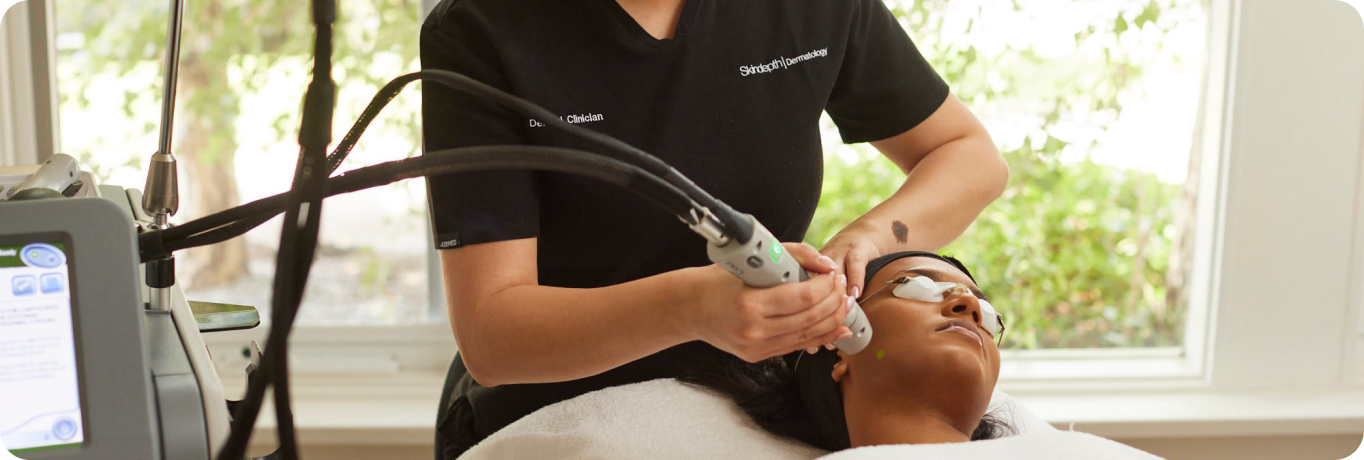
Diathermy is a treatment designed to remove lumps and bumps of the skin. The device uses high-frequency electromagnetic currents to destroy the lesion. The area to be treated is sometimes numbed with a local anaesthetic and then a probe is used to tap the lesion and pass the current.
-
Is Diathermy Painful?
Even with the topical anaesthetic you can feel a sting. Some areas of the body or face can be more sensitive then others. An itchy or hot sensation can be felt post treatment.
-
How long is the treatment?
Topical anaesthetic is applied first and left on the skin for up to 30- 45 minutes. The treatment itself takes 30 minutes. Multiple treatments may be required to achieve the desired outcome/result.
-
What is the expected downtime with treatment?
Localised redness and swelling can take up to 2 days resolve. A darker crust/ scab in the area treated can last up to 7-10 days on the face and up to 14 days on the body. Full results can be seen in 4-6 weeks.
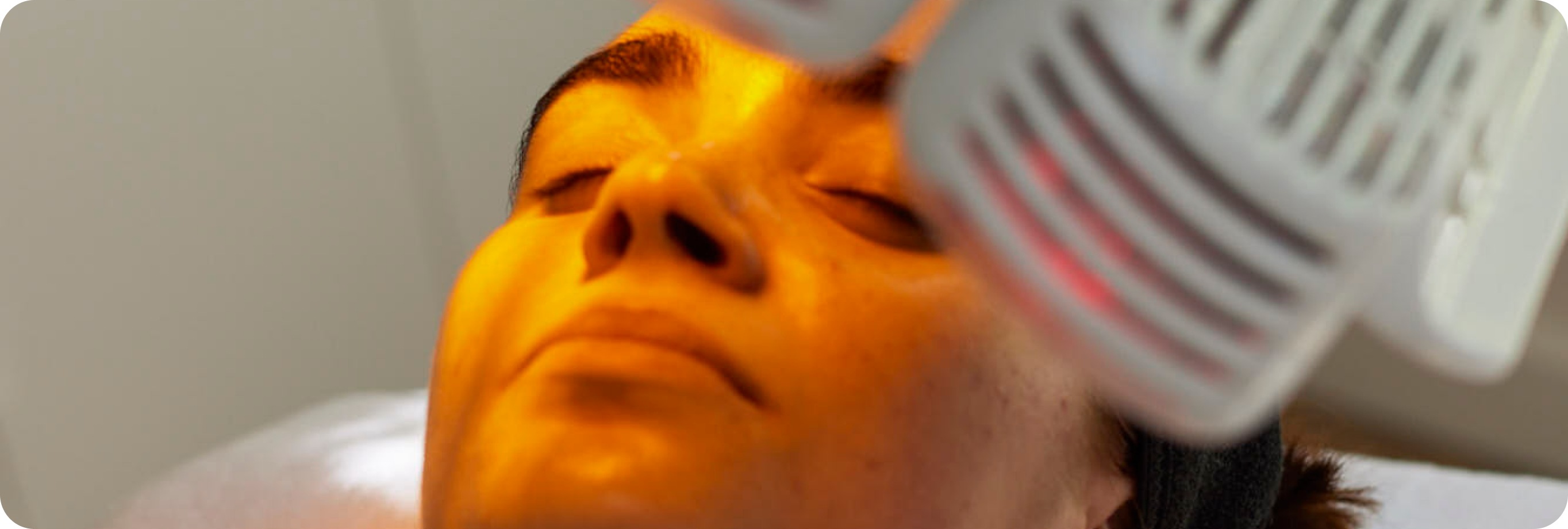
ALA-PDT is a highly effective treatment designed for those suffering with severely sun damaged skin or pre-cancerous skin cells (Solar Keratoses). The treatment works with photochemical reactions through the interaction of photosensitising agents (ALA aminolevulinic acid) and light (PDT Photodynamic Therapy) to rejuvenate the skin. This treatment can prevent the development of skin cancer. The treatment is usually only performed once a year.
ALA-PDT should be recommended by your Dermatologist. This treatment is suitable for people concerned with severely sun damaged skin, redness, pigmentation and uneven skin tone. It is not suitable for those with photosensitive disorders, infections, peanut allergy or pregnancy.
-
Is ALA-PDT painful?
There is some discomfort experienced with this treatment. During the treatment the sensation is described as being like an elastic band flicking the skin accompanied by heat. Some areas on the face are more sensitive than others such as upper cheeks and nose. The bright laser can make the eyes sensitive temporarily. The skin can feel like severe sunburn post treatment however cooling will be provided to alleviate any discomfort during or after the treatment.
-
How long is the treatment?
There are two appointments on the same day to administer ALA-PDT. During the first appointment the skin is prepped with ALA, this takes half an hour. The ALA is left on the skin for 3.5 hours before coming back to the clinic for the Photodynamic Therapy component which takes 45 minutes to complete.
-
What is the expected downtime with treatment?
All skin types are different therefore downtimes can vary. Swelling, redness and bruising can last anywhere between 5-7 days post treatment. Temporary darkening of the skin can occur for up to 7-14 days. Micro-crusting and peeling can occur on the face between days 3-5. If the skin bruises then this can last anywhere between 5-7 days.
Cosmetic:
Medical Grade Laser Signature Treatment Express Laser Facial Peels Advanced Peels Skin Rejuvenation Hair Reduction Light Therapy- Choosing a selection results in a full page refresh.
- Opens in a new window.
